#ivory carving
Text
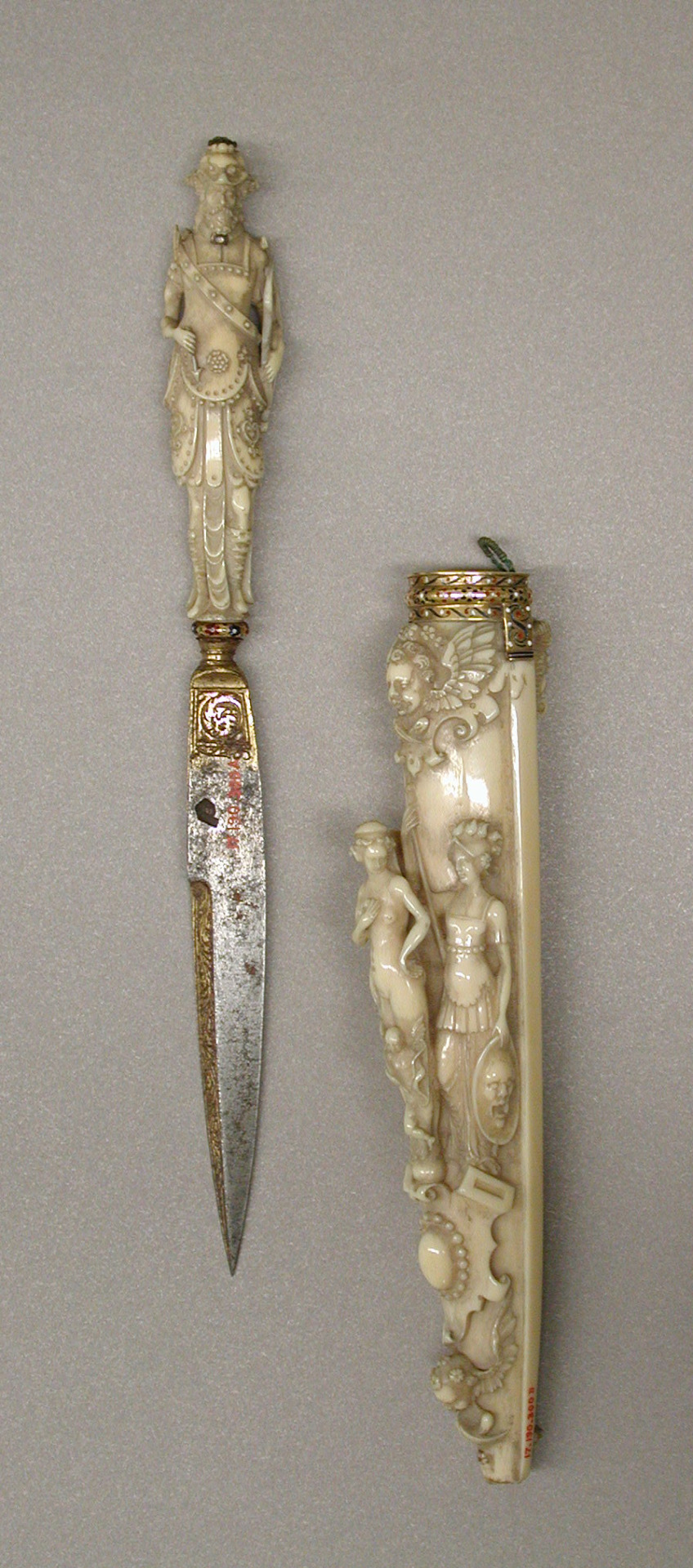
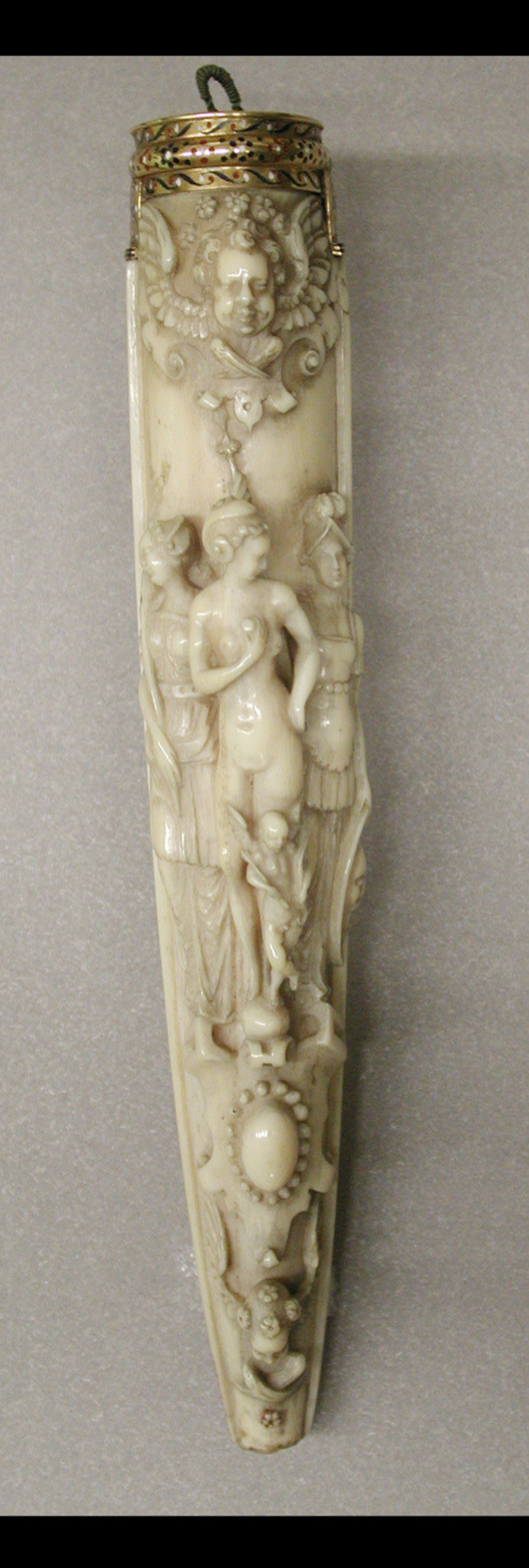

Knife with Sheath, Dieppe (French), 19th century
#dark academia#dark academia aesthetic#academia#art#aesthetic#artwork#light academia aesthetic#fashion#dark academia fashion#gold aesthetic#French#bloody knife#dieppe#ivory knife#anthropology#19th century#ivory carving
492 notes
·
View notes
Text
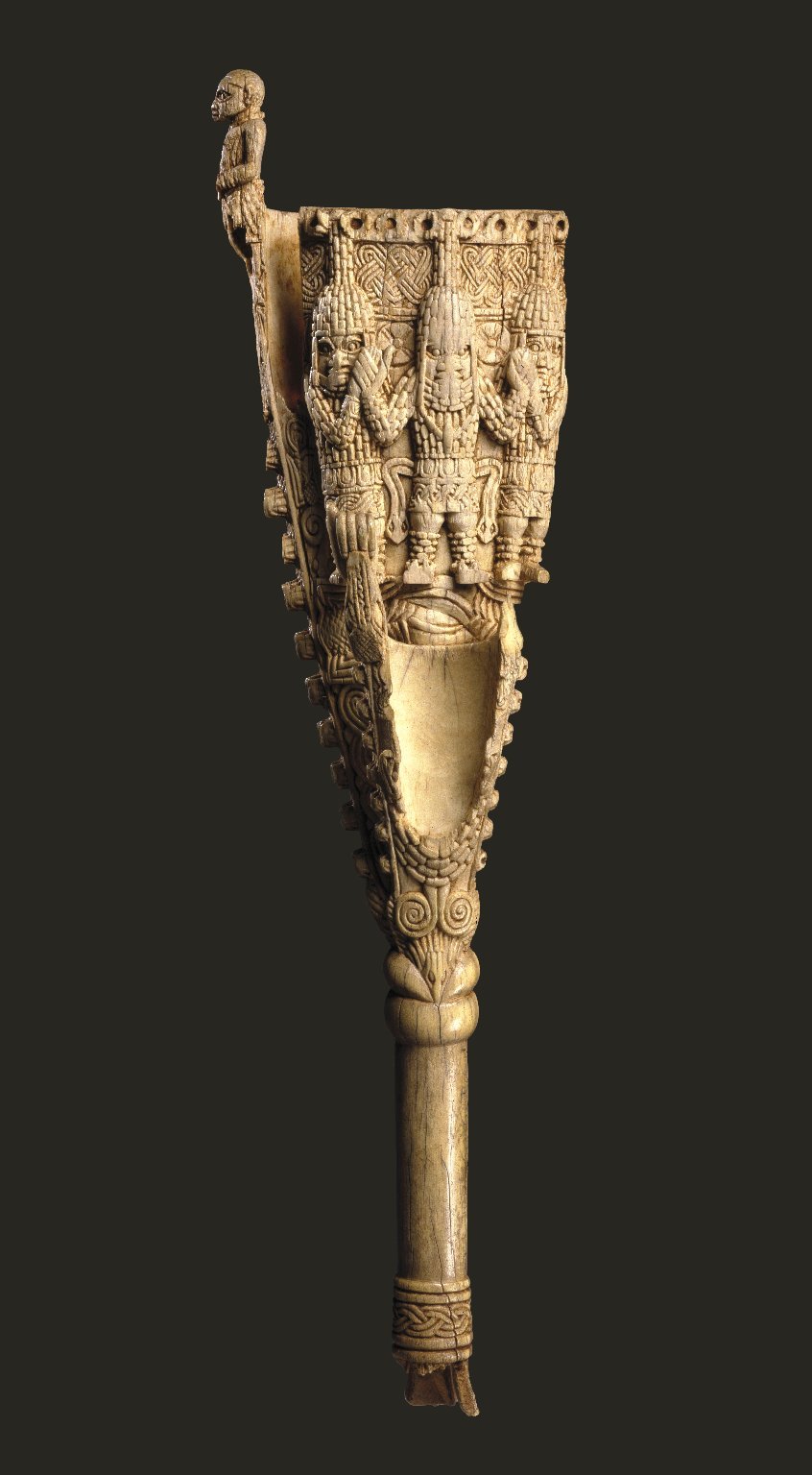
Ivory double bell (egogo) from the Benin kingdom in present-day Edo State, Nigeria, depicting the oba (king) with his arms upheld by two attendants, possibly high priests. The oba wielded the egogo during the Emobo rite that concluded the Igue festival, using its sound to repel troublesome spirits. Artist unknown; early 16th century. Now in the Brooklyn Museum. Photo credit: Brooklyn Museum.
#art#art history#Africa#African#African art#West Africa#West African#West African art#Nigeria#Nigerian art#Kingdom of Benin#Benin art#sculpture#ivory#ivory carving#African religions#16th century art#Brooklyn Museum
131 notes
·
View notes
Photo

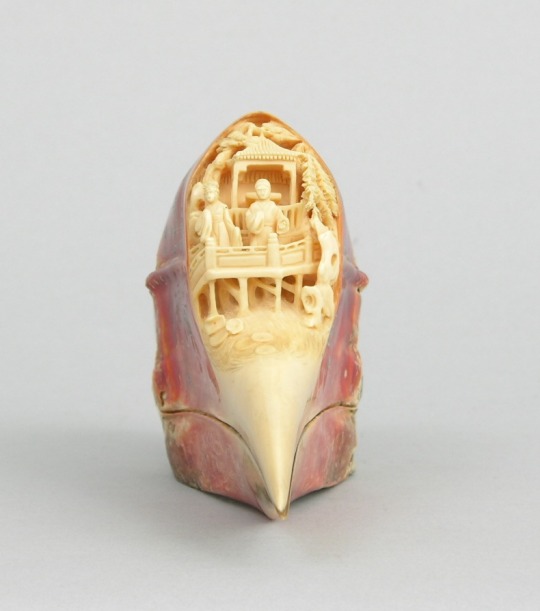


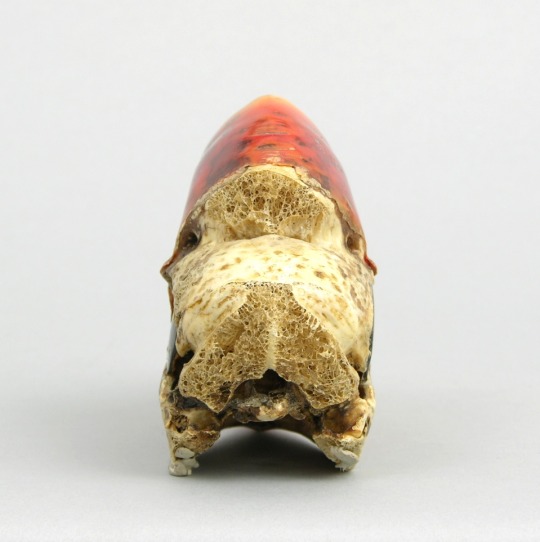

Exquisite Helmeted Hornbill skull carving auctioned in 2007. Late Qing.
The inscription reads "殷勤寄牛女,河漢正相望". These are lines from the poem of Yuan Zhen (元稹), Chinese novelist and poet of the middle Tang.
Such a carving was a rare and valuable collector's item. Artifacts of this kind did not appear in China until the early Ming. Precious hornbill ivory could be imported from Burma, Siam and Malay Peninsula. Mostly expensive small accessories were made of hornbill ivory; the use of a whole skull is rather atypical. Currently, the trade of hornbill ivory is prohibited by law.
Despite the apparent massiveness, the skull is pretty light, since the bone outgrowth has a porous structure. Outside, it is covered with a gleaming scarlet ivory-like substance.
See more in The University Museum Bulletin.
#Qing Dynasty#qing#chinese art#ivory#ivory carving#skull#skull art#skull design#skull aesthetic#ancient china#chinese culture
159 notes
·
View notes
Text

A Little Guy on a Yup'ik harpoon line, c1885-1930!
Little Guy rating: 10/10
Notes: ivory little guy! probably a seal!
#alittleguyaday#ivory carving#yup'ik#first nations#yupik#first nations art#sorry for the absence i was up a mountain#seal
14 notes
·
View notes
Text

Jan Herck and Georg Petel (After Rubens) • Saltcellar with the triumph of Venus • 1627-1628 • 43.8 × 12.5 cm • Ivory, gilding (technique), silver • Royal Palace Stockholm
#Ivory carving#sculpture#decorative object#baroque art#royal palace stockholm#jan herk and georg petel#art#decorative arts#pagan sphinx art blog#roman mythology#fine art#museum aesthetic#art blog
12 notes
·
View notes
Photo
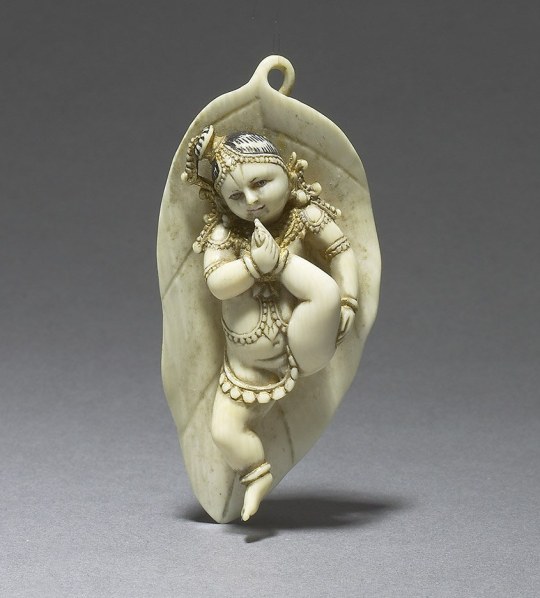
Bala Mukundashtakam - Baby Krishna on a Banyan Leaf
Indian Ivory Carving. (via Joost van den Bergh)
78 notes
·
View notes
Photo

Jesus, the Good Shepherd Boy, Ivory, 17th century, Portuguese Goa, India
Museo di Capodimonte, Naples, Italy
This is a typically Portuguese Goan representation of Jesus. It shows him sitting peacefully at the top of a terraced hill that possibly represents the mountain of life. He holds a lamb on his knee, and another is on his left shoulder. He wears a tunic, belt, and sandals. The resting female figure with her hand on a book in a grotto next to a crucifix is a traditional way of depicting St. Mary Magdalene.
Photo by Charles Reeza
15 notes
·
View notes
Text

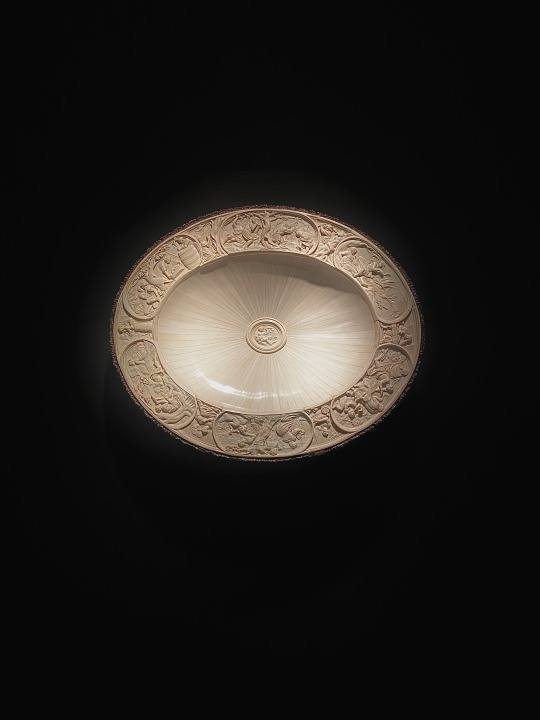
court basin by balthasar griessmann, about 1670, carved in ivory with staghorn framing showing the course of seasons, presented by kunstkammer georg laue, munich, on tefaf 2023
#kunstkammer#georg laue#balthasar griessmann#ivory#staghorn#ivory carving#palazzo pitti#kunsthistorisches museum vienna#mankoen
2 notes
·
View notes
Photo
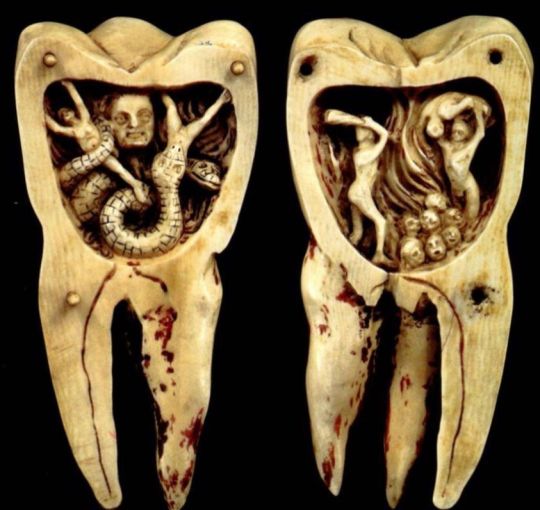
18th century French ivory carvings depicting "tooth worms” believed by many people in the past to bore holes in human teeth and cause toothaches.
3K notes
·
View notes
Photo
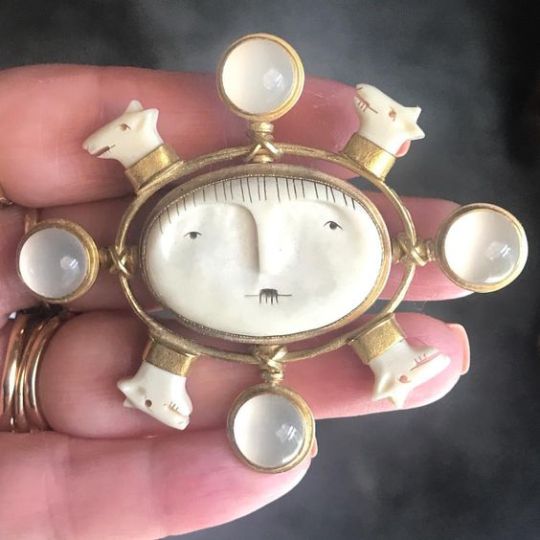
Mastodon Ivory Amulet by Carolyn Morris Bach
774 notes
·
View notes
Text
Another #TwoForTuesday for #WorldRatDay: two Japanese netsuke of two rats from the Met!

Title: Netsuke of Two Rats
Artist: Okatori
Date: early 19th century
Culture: Japan
Medium: Ivory, horn
Dimensions: H. 1 in. (2.5 cm); W. 1 9/16 in. (4 cm)

Title: Netsuke of Two Rats
Period: Meiji period (1868–1912)
Date: second half of the 19th century
Culture: Japan
Medium: Wood
Dimensions: H. 1 1/4 in. (3.2 cm); W. 1 1/2 in. (3.8 cm)
#World Rat Day#rat#rats#rodents#Japanese art#East Asian art#Asian art#netsuke#costume#decorative arts#carving#ivory#horn#wood#Metropolitan Museum of Art New York#Okatori#animal holiday#Two for Tuesday#animals in art
427 notes
·
View notes
Text
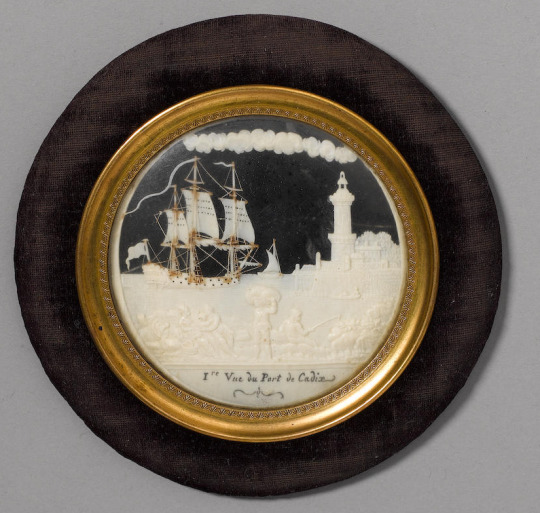
Mini ivory carving of a sailing ship entering a harbour, with quayside activity, inscribed at the bottom in Indian ink "Ire Vue du Port de Cadiz", 18th or early 19th century
97 notes
·
View notes
Text

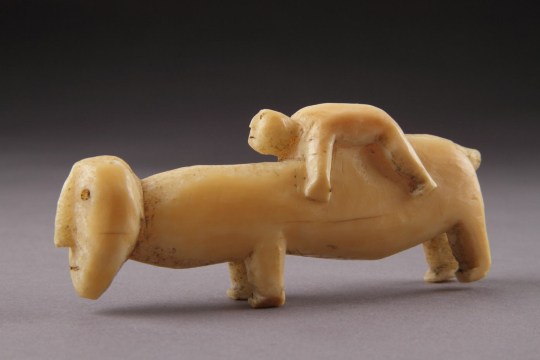

"Bering Sea Eskimo Inuit Carved Walrus Ivory Anthropomorphic Figure of a Polar Bear with its Cub,"
A Bering Sea Eskimo Inuit Carved Walrus Ivory Anthropomorphic Figure of a Polar Bear with its Cub, probably Amuletic. Early 19th Century,
3.5cm high, 9.5cm long, 2.5cm wide (1½ ins high, 3¾ ins long, 1 ins wide).
Courtesy: Finch & Co.
#art#history#design#style#archeology#sculpture#bering sea#inuit#carved#ivory#anthropomorphic#figure#bear#cub#eskimo#amulet#finch&Co
100 notes
·
View notes
Text



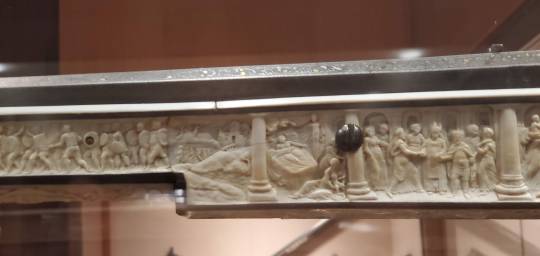


Wheellock Gun of Philippe de Croy, Prince of Chimay (1526–1595 Flemish). covered in breathtaking panels of carved ivory depicting over a dozen greek gods
metropolitan museum of art, Gallery 375 (arms and armor -> European Hunting and Sporting Weapons)
39 notes
·
View notes
Text

Lion-man, the oldest known anthropomorphic animal carving in the world ( 38,000 BCE ). It was found in a German cave in 1939. it was carved out of mammoth ivory using flint stone tools.
29 notes
·
View notes
Text
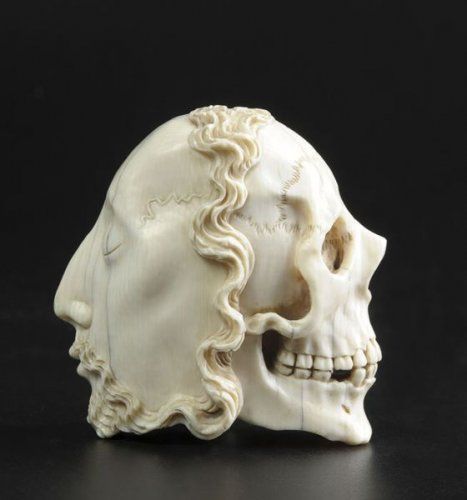
Terminal bead of carved ivory rosary. Spain, 17th century.
38 notes
·
View notes